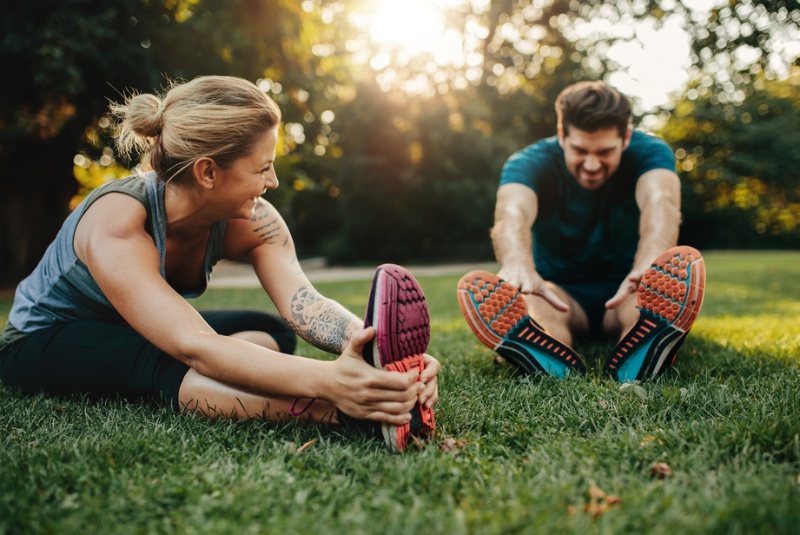The world of fitness is filled with countless workout regimens, equipment, and techniques. Amidst the noise, it’s easy to overlook one essential aspect of physical fitness: flexibility. Flexibility and stretching are critical components of a balanced fitness program, contributing to overall health, injury prevention, and improved performance in various physical activities.
The Fundamentals of Flexibility
Flexibility is the ability of a joint to move through its complete range of motion (ROM) without pain or restriction. It is an essential component of physical fitness and is influenced by factors such as muscle length, joint structure, and connective tissue elasticity. Regularly engaging in activities that promote flexibility can yield a myriad of benefits, including:
- Enhanced Performance: Improved flexibility allows for more efficient movement patterns and increased force production, which can lead to better performance in sports and everyday activities.
- Reduced Risk of Injury: A flexible body is less likely to experience strains, sprains, and other injuries. This is because increased ROM enables muscles and joints to absorb and distribute forces more effectively during physical activity.
- Improved Posture and Alignment: Developing flexibility in key muscle groups can help correct muscle imbalances and poor posture, which can reduce the risk of chronic pain and musculoskeletal issues.
- Increased Blood Flow: Stretching promotes better circulation, which can aid in muscle recovery and overall health.
- Stress Relief: Stretching can be a calming and meditative practice, helping to alleviate both physical and mental stress.

The Power of Stretching
Stretching is the primary method of improving flexibility. There are several types of stretching techniques, each with its own unique benefits and applications:
- Static Stretching: This involves holding a stretch for an extended period (usually 15-60 seconds) without moving. Static stretching is best performed after a workout or physical activity when muscles are warm.
- Dynamic Stretching: This technique involves moving through a range of motion repetitively, gradually increasing the reach and speed of movement. Dynamic stretching is ideal as part of a warm-up routine before physical activity.
- Proprioceptive Neuromuscular Facilitation (PNF): PNF is an advanced form of flexibility training that involves contracting and relaxing muscles in a specific sequence to facilitate a deeper stretch. This type of stretching is best performed under the guidance of a trained professional.
- Ballistic Stretching: This technique uses bouncing or jerking movements to push a muscle beyond its normal range of motion. Ballistic stretching is generally not recommended due to the increased risk of injury.
Incorporating Flexibility and Stretching into Your Fitness Routine
To reap the full benefits of flexibility and stretching, consider the following tips:
- Prioritize Consistency: Aim to incorporate stretching exercises into your routine at least 2-3 times per week. Consistent practice is crucial for seeing improvements in flexibility over time.
- Warm-Up Wisely: Before engaging in static stretching, warm up your muscles with 5-10 minutes of light aerobic activity or dynamic stretching. This helps to reduce the risk of injury and improve the effectiveness of your stretches.
- Be Mindful of Technique: Focus on proper form and alignment when performing stretches. Stretching should never cause pain; if it does, adjust your technique or reduce the intensity of the stretch.
- Listen to Your Body: Pay attention to your body’s signals during stretching exercises. If you feel discomfort or pain, ease off the stretch and consult a fitness professional for guidance.
- Don’t Neglect Balance: Strive for balanced flexibility by targeting all major muscle groups and both sides of the body. Overlooking certain areas can lead to muscle imbalances and injury.
- Set Realistic Goals: Flexibility improvements take time and consistent effort. Set achievable goals for yourself and celebrate your progress along the way.
- Combine Stretching with Strength Training: A well-rounded fitness program should include both flexibility and strength training exercises. This will ensure optimal muscle balance and joint stability.
- Seek Professional Guidance: If you’re unsure about your stretching technique or need personalized advice, consult a fitness professional, such as a personal trainer or physical therapist.
Flexibility and stretching are essential components of a balanced fitness program, offering numerous benefits for overall health and performance. By incorporating various stretching techniques into your routine consistently and mindfully, you can improve your flexibility, reduce the risk of injury, and optimize your physical capabilities. Remember to be patient with yourself as you work towards your flexibility goals, and always listen to your body to ensure a safe and effective approach. With dedication and persistence, you’ll be well on your way to a more flexible and healthier you.


